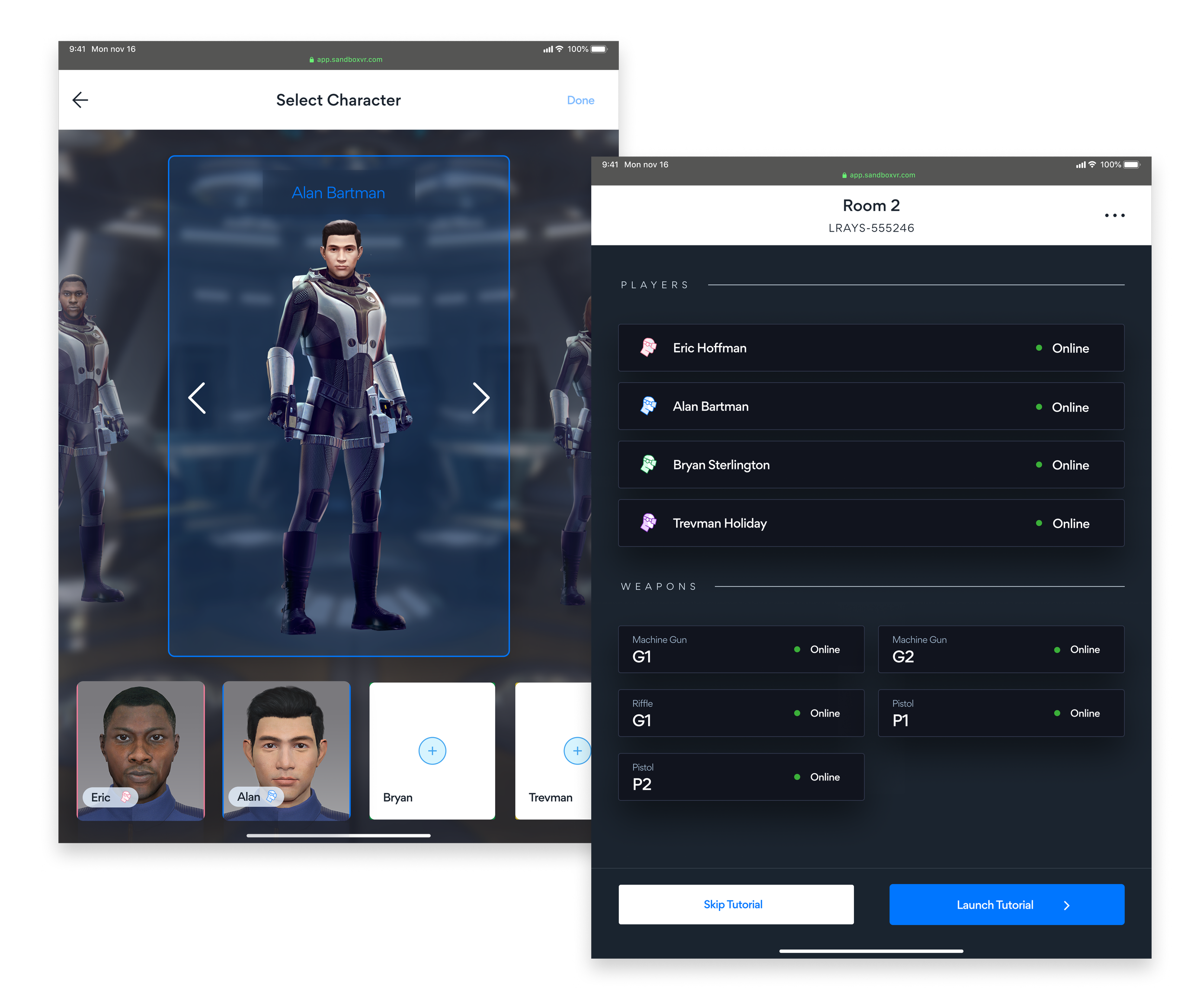SandboxVR Back Office App
SandboxVR is a virtual reality gaming facility that has created some of the most ground breaking experiences in the industry. They make every game in-house and pride themselves on creating unique experiences with ZERO lag.
They have hundreds of employees that work on location to provide the best gaming experience to their guests. To do so, they use 2 apps (built in house) to move groups from room to room, add/remove players, test the equipment, start and end gaming experience, assign avatars, and a handful of other tasks they perform day to day.
Our goal was to consolidate the two apps into one user friendly application where employees can access all of the tools they need.
My Role
I was the principle designer for the app which entailed — user research, application flowcharting (information architecture), wire-framing, user testing, design system creation, and working with the development team in Hong Kong throughout the building process.
Design Process
We started by developing requirements based off of the current process the employees would go through to set up and manage the gaming experience. I would have weekly meetings with the Susan, the store manager where I would interview the employees and watch their workflow. That eventually turned into testing wireframes to validate some of the architecture I was exploring.
Once I felt comfortable with the wireframe mockup, it was time to establish a design system for the app. Our brand specialist had developed a strong brand book for SandboxVR, and we had a very small design system in place for the marketing site. I used those as a jumping off point to establish the applications design system.
We needed a light mode and a dark mode for each component. When the employee us using the app in the lobby (checking people in, assigning avatars, etc) the app was in light mode. The minute the employee entered the room where the game takes place, the app would switch to dark mode.
Constraints
This project had a lot of constraints. One of the most hardest ones to work with was that we couldn’t build it as a native app. SandboxVR already had a framework in place for a PWS (Progressive Web App) to be the chosen technology for this app. Working within that constraint ruled out many interaction points I had planned for during the wire framing phase. One of which being the ability to grab and drag within the app. We had to re-design the interaction for moving a group into a barracks and room. We also had to re-test the interaction with the employees to make sure it didn’t break the usability we had already established.
Another constraint was based around the amount of videos they render a day and the speed at which those videos are able to render within the app. We needed a clear call to action to retry when a render failed. I tried to convince the development team to fix the issue on their side, and that you should never fix a bug using design, but I lost that battle. You win some, you lose some.





